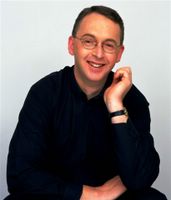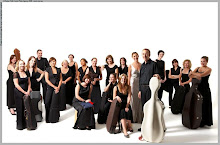Experience the Enlightenment through Mozart, Haydn & Gluck
PERTH 23 JANUARY | BUNBURY 24 JANUARY | BRIDGETOWN 25 JANUARY
Optimism! Discovery! The need for new frontiers! Australia is a living result of the ideas of the Enlightenment. To experience it today, you need to feel the full force of its music. Beginning with Mozart, Haydn and Gluck.
This summer, the Australian Classical Era Orchestra will bring these three giants of the Enlightenment to life in Western Australia.
Mozart’s Horn Concerto in D major, with the brilliant Natural Horn Soloist Darryl Poulsen, will inspire you. The transparency of the string and wind sections demands exacting accuracy. Mozart takes his horn player and his audience on a thrilling adventure.
Haydn’s Symphony No. 67 pushes your expectations of what normal music is. It may not be comfortable, but then he believes progress never is.
Gluck brings you the intensity of Lust, Fire and the Horrors of Hell itself as he takes you down into the netherworld with Don Juan.
The Australian Classical Era Orchestra is passionate about authentically recreating music from the Classical Era of 1740 to 1830. All the musicians perform on period instruments, or their replicas, displaying the depth of talent in Western Australian.
When and Where
Saturday 23 January 7.30pm
Perth Government House Ballroom (Google Map)
Tickets available through BOCS, Tel: 08 9484 1133
Sunday 24 January 3pm
Bunbury Regional Entertainment Centre (Google Map)
Tickets available through BREC, Tel: 1300 661 272
Monday 25 January 7.30pm
Bridgetown Repertory Theatre (Google Map)
Tickets available through Bridgetown Visitor Centre, Tel: 08 9761 1740
Friday, November 06, 2009
Monday, January 19, 2009
Review: Fine tribute to Haydn
Australian Classical Era Orchestra Government House Ballroom, January 15, review by William Yeoman
This year sees the 200th anniversary of the death of Joseph Haydn and to celebrate the occasion the Australian Classical Era Orchestra, which specialises in historically informed performances, presented two of Haydn’s orchestral masterworks, together with a selection of arias from the operas of his friend Wolfgang Amadeus Mozart.
Directed from the violin by the ever-reliable Paul Wright, the ACEO began its concert with an account of Haydn’s Symphony No. 61 that grabbed the attention right from the opening Vivace and released it only in the closing moments of the gigue-like Prestissimo.
This was first-rate playing indeed, the finely balanced natural horns and well-drilled strings especially impressive.
London-based Australian soprano Kathryn McCusker then joined the orchestra on stage for two of Mozart’s best-loved arias, Aminta’s L’amero, saro costante from The Shepherd King and the Contessa’s Dove sono from The Marriage of Figaro.
This was exceptional singing, McCusker’s sweet, unforced tone effortlessly filling the hall without seeming too strongly contrasted with the more subtly projected sounds of the historic instruments.
This was even true in the second half of the concert, where McCusker’s considerable dramatic skills were on display in Donna Anna’s aria from Don Giovanni and Konstanze’s aria from Mozart’s Escape from the Seraglio.
In between these last two came Haydn’s delightful G major concerto for violin and strings, which gave Wright an opportunity to show off his own instrument’s singing tone as well as a digital dexterity fully at the service of a prodigious musicality.
If one were pressed to find any fault with this excellent concert, it might be in the occasionally ragged woodwind entries in the Haydn symphony and in the differences between McCusker and the orchestra in matters of vibrato and tone colour.
But that would just be splitting hairs.
With any performance, it’s the overall effect that matters, which in this case was like that of a well-executed water colour: an abundance of lightness and delicacy animated by a passionate commitment to truth.
This year sees the 200th anniversary of the death of Joseph Haydn and to celebrate the occasion the Australian Classical Era Orchestra, which specialises in historically informed performances, presented two of Haydn’s orchestral masterworks, together with a selection of arias from the operas of his friend Wolfgang Amadeus Mozart.
Directed from the violin by the ever-reliable Paul Wright, the ACEO began its concert with an account of Haydn’s Symphony No. 61 that grabbed the attention right from the opening Vivace and released it only in the closing moments of the gigue-like Prestissimo.
This was first-rate playing indeed, the finely balanced natural horns and well-drilled strings especially impressive.
London-based Australian soprano Kathryn McCusker then joined the orchestra on stage for two of Mozart’s best-loved arias, Aminta’s L’amero, saro costante from The Shepherd King and the Contessa’s Dove sono from The Marriage of Figaro.
This was exceptional singing, McCusker’s sweet, unforced tone effortlessly filling the hall without seeming too strongly contrasted with the more subtly projected sounds of the historic instruments.
This was even true in the second half of the concert, where McCusker’s considerable dramatic skills were on display in Donna Anna’s aria from Don Giovanni and Konstanze’s aria from Mozart’s Escape from the Seraglio.
In between these last two came Haydn’s delightful G major concerto for violin and strings, which gave Wright an opportunity to show off his own instrument’s singing tone as well as a digital dexterity fully at the service of a prodigious musicality.
If one were pressed to find any fault with this excellent concert, it might be in the occasionally ragged woodwind entries in the Haydn symphony and in the differences between McCusker and the orchestra in matters of vibrato and tone colour.
But that would just be splitting hairs.
With any performance, it’s the overall effect that matters, which in this case was like that of a well-executed water colour: an abundance of lightness and delicacy animated by a passionate commitment to truth.
Monday, January 05, 2009
Mozart & The Joker — Program Notes Snapshot
I compare Mozart’s compositions to a gold snuffbox, manufactured in Paris, and Haydn’s to one finished off in London
– Emperor Joseph II, Vienna, Spring 1786
This program is a celebration of the originality, wit and good humour of one of the Classical Era’s most sentinel figures, Franz Joseph Haydn, and 2009 marks two hundred years since his death at the end of May 1809, in the Viennese suburb of Gumpendorf, with the advancing guns of Napoleon booming in the background.
Like a mischievous clown flouting stagecraft, peeping out between the curtains at the audience – even giving a silly wave – before the house lights are dimmed and the show officially begins, Haydn needs only to 'peep out' waving a musical theme in order to give the listener a feeling that tends towards the comical. Take for instance the theme in the last movement of our Symphony. In gigue rhythm, its tempo is so quick that to even attempt to dance, however, would guarantee a complete tangle of legs and bodies falling in an hilarious heap on the floor – while the oboes give a silly wave with a twee “Cuc-koo”!
Full Program Notes will available be at the venue, complimentary to all ticket holders.
Subscribe to:
Posts (Atom)









